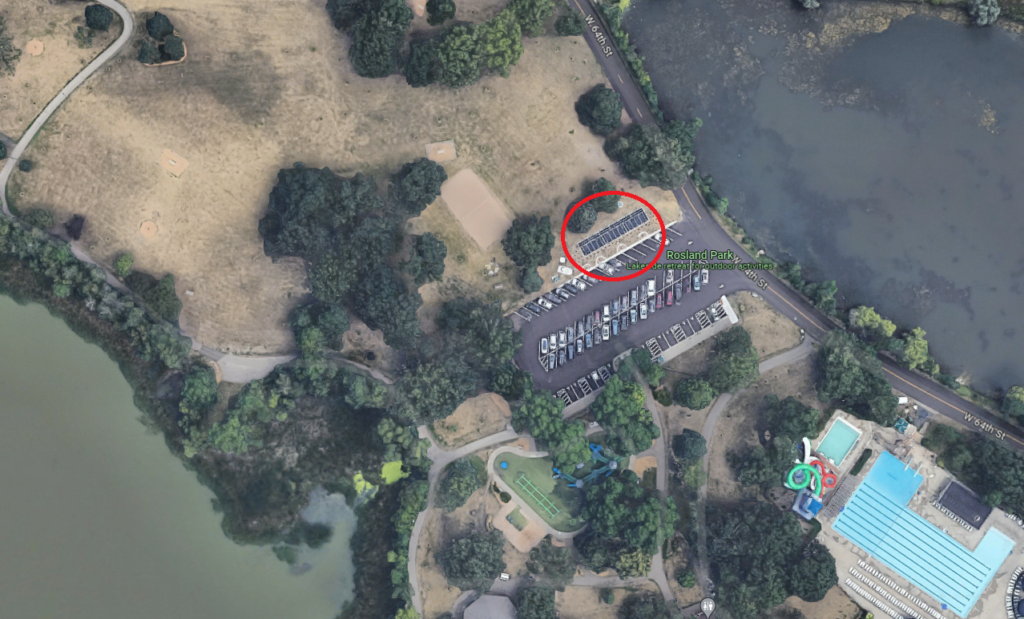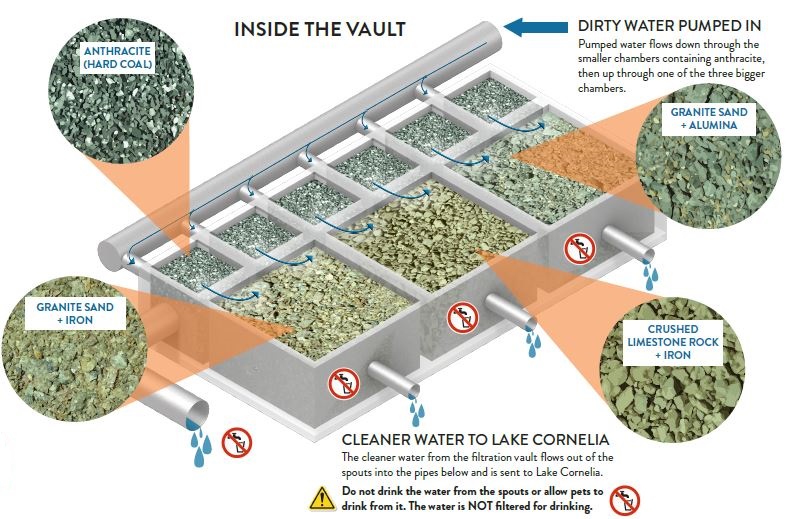Edina
ABOUT
The Rosland Park Filtration Vault is an experimental best management practice (BMP) located in Rosland Park between Swimming Pool Pond and Lake Cornelia in Edina. It treats polluted water from Swimming Pool Pond before cleaner water is discharged into Lake Cornelia.

Project Goals
This project is part of our larger Lake Cornelia Improvement Project which aims to reduce the amount of phosphorous, nitrogen, and solids entering Lake Cornelia. The Rosland Park Filtration Vault will also contribute to the scientific community by providing data on different filtration media through intensive field monitoring.
Project Summary
The Rosland Park Filtration Vault reduces the amount of nutrients entering Lake Cornelia from Swimming Pool Pond and the 410-acre watershed that drains to the lake. Water is redirected from Swimming Pool Pond to the filtration vault before flowing into Lake Cornelia.
Inside the vault, water first flows into a pre-treatment cell which contains anthracite, a type of coal. Then the water flows into one of three different media cells. The cells contain either iron-enhanced granite sand, iron-enhanced aggregate, or granite sand with alumina. Staff sample the water that flows from each of these cells to see which media best removes nutrients. As we learn what media is most effective at water treatment, the District will remove and replace the media inside the cells with the best media. During drier months when water levels in the pond are too low, water from Lake Cornelia itself will be filtered through the vault and flushed back into the lake to maximize water treatment.

**The water flowing out of the Rosland Park filtration vault is not potable. Do not drink or allow your pets to drink the water flowing out of the filter vault.**
Research Results
Rosland Park Filtration Vault Research Summary (pdf)
More information: https://wrc.umn.edu/filter-media-p
Funding Acknowledgements

This project was supported through an appropriation from the Clean Water Fund established by the Minnesota Clean Water Land and Legacy Amendment.
For more information about the Minnesota Clean Water, Land and Legacy Amendment, visit https://www.legacy.mn.gov/about-funds.
This project was also supported with a grant from the Minnesota Stormwater Research Council through the University of Minnesota Water Resources Center.
For more information about the Center and the Council, visit https://www.wrc.umn.edu/projects/storm-waste-water.
 Any opinions, findings, conclusions, or recommendations expressed in this publication are those of the author(s) and do not necessarily reflect the view of the Water Resources Center or Minnesota Stormwater Research Council.
Any opinions, findings, conclusions, or recommendations expressed in this publication are those of the author(s) and do not necessarily reflect the view of the Water Resources Center or Minnesota Stormwater Research Council.
The District also received funding from Hennepin County’s Opportunity Grant program to offset District capital improvement funds to implement the project.
